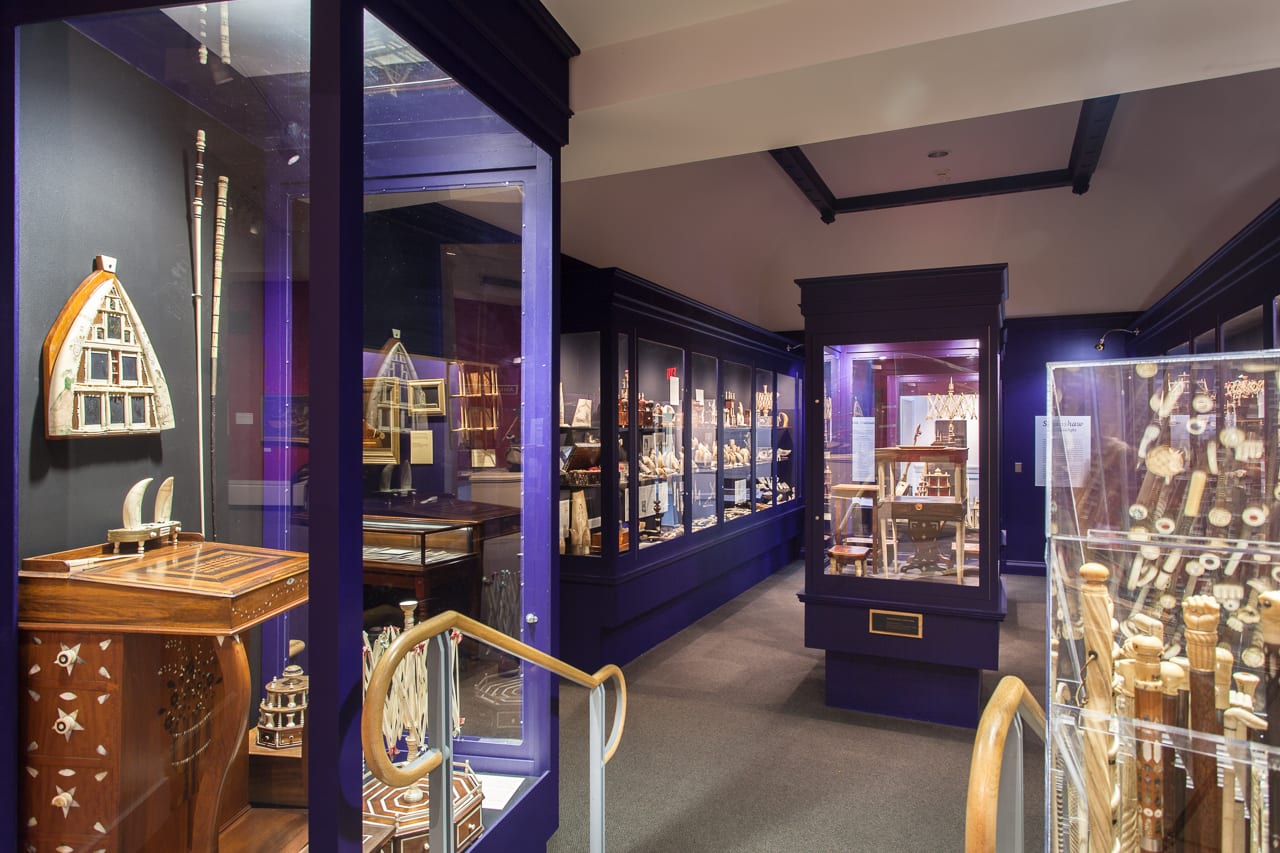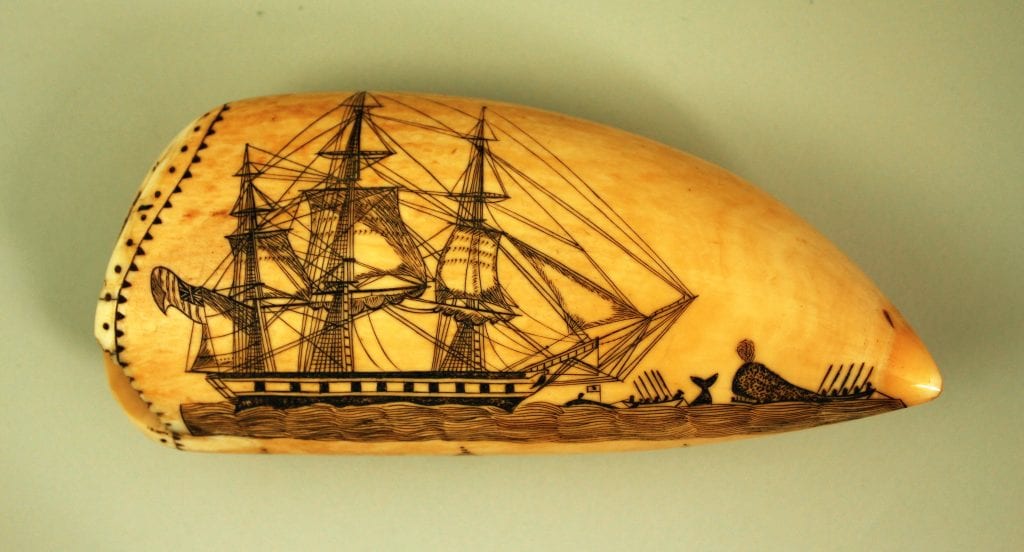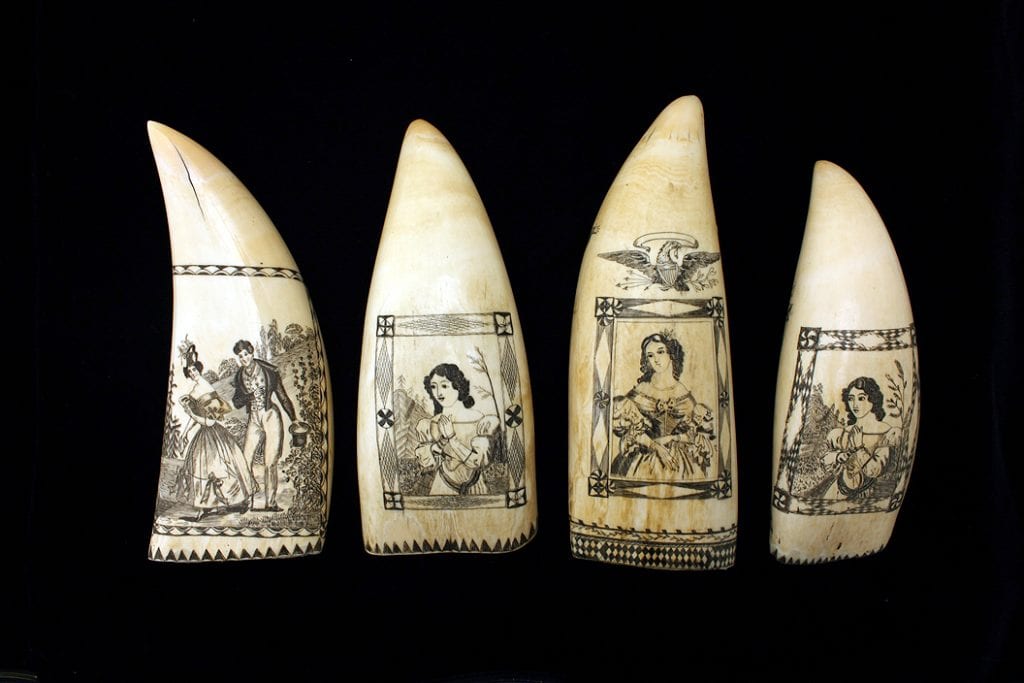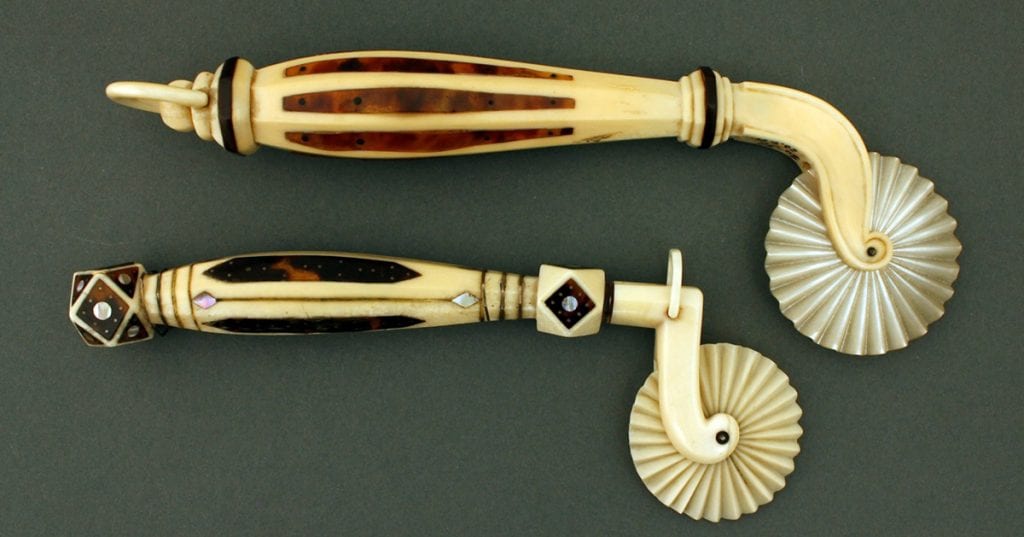Scrimshaw
Scrimshaw Gallery
Opened: May 13, 2012
Installed in 2012, this is a sumptuous “permanent” exhibition of the best, most representative, and most compelling curiosities of our vast scrimshaw holdings — a generous selection drawn from the world’s largest and greatest collection. The exhibition is the partial result of 25+ years of cataloging and research.
The exhibition presents the scrimshaw itself in all its unique and occupationally rooted glory. Many of the pieces are on exhibit for the first time; many others have not been on public display for decades. The exhibition also shows some of the pictorial sources of the whalers’ work; it traces such topical themes as symbolic patriotic figures, American naval prowess, portraiture, fashion plates, ethnic diversity, the Napoleonic mystique, and the whale hunt itself; it features works by English, Scottish, Azorean, Cape Verdean, African-American, Continental European, Arctic, Pacific Islander, and Japanese practitioners; and it illustrates some of the tools and mainstream methods of engraving ivory and bone, and constructing “built” scrimshaw at sea.
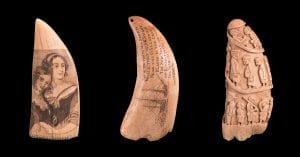
Scrimshandering, as the whalemen called it — making scrimshaw — was an indigenous and exclusive shipboard art of the deepwater trades, practiced mostly by whalers but also occasionally by navy tars and merchant seamen. The whalemen’s practice of engraving pictures on whale ivory, walrus ivory, baleen, and skeletal bone originated in the late Colonial era, almost precisely coevally with the beginnings of whaling out of New Bedford; it matured in the 1820s and ’30s, as New Bedford itself ascended to dominate whaling worldwide; it continued well into the 20th century, right up to the collapse of conventional hand-whaling on sailing ships and rowboats; and, reborn among the “modern” whalers on mechanized floating-factory whaleships and shore stations, it persisted throughout most of the 20th century.
A significant majority of the pieces on exhibit — pictorial sperm whale teeth, walrus tusks, swifts, canes, corset busks, watch hutches, birdcages, pie crimpers, and various tools and domestic implements for the sewing room and the kitchen — had their genesis aboard whaleships from the New Bedford Port District. But, uniquely, the exhibition also includes scrimshaw precursors — extraordinarily rare ornamented implements of skeletal bone from the Viking Era of medieval Norway, and baleen objects from the Arctic whale fishery of the 17th-century Dutch Golden Age — as well as noteworthy productions by foreign and immigrant practitioners from every quarter of “the terraqueous globe” (to borrow Melville’s words), and the world’s only significant collections of British scrimshaw and scrimshaw from the modern, 20th-century factory-ship era.
Fakeshaw
Fakeshaw is a category of synthetic machine-manufactured, mass-produced, factory-made objects that are intended to resemble scrimshaw.
Some are made to look like sperm whale teeth, others to look like walrus tusks, hippopotamus teeth, pieces of bone, and objects of various kinds that have been carved out of, or constructed from, natural ivory and bone. The material is a combination of polymers (plastics) and additives to create the illusion of ivory and bone.
Many people believe that Fakeshaw is manufactured specifically in order to deceive people into believing that it is genuine scrimshaw, and there can be little reason for its manufacture without disclaimers other than to deceive people; but whatever purpose the manufacturers may have had in mind, it has deceived thousands of people, sometimes quite cruelly, and has the same effect as art fraud. Fakeshaw is fake; it has no historical significance, it has no aesthetic merit, and it has virtually no monetary value. From the standpoint of any museum or collector, Fakeshaw is worthless.
